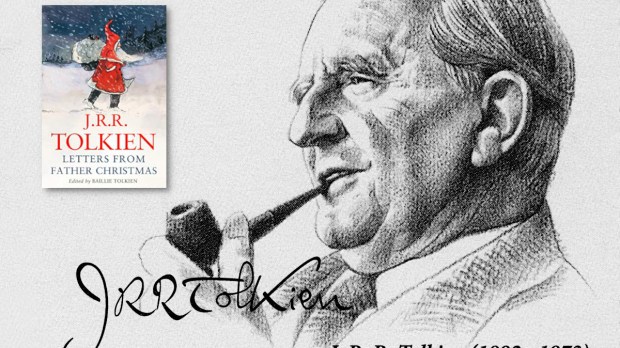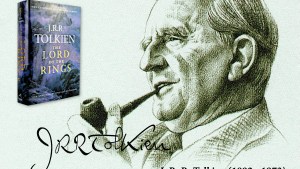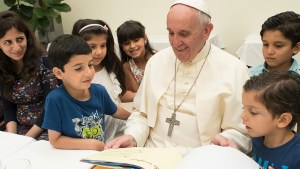J.R.R. Tolkien is rightly remembered for The Hobbit and The Lord of the Rings. There are a number of other Tolkien works that are also worth seeking out, however. In particular, I would recommend the delightful “Leaf by Niggle,” a fable that reveals how Tolkien envisioned the place of art and artists in the world.
Also worth checking out, especially if you are a parent, are two lesser-known books, Letters from Father Christmas and the storybook Mr. Bliss. Like The Hobbit, both books were written for his children and give us a glimpse of how Tolkien approached the job of parenting.
Letters from Father Christmas. In 1920, Tolkien wrote a letter from Father Christmas to his eldest son, John. He would continue the tradition with all his kids for the next 20 years. The letters were gathered and posthumously published in book form in 1976, three years after Tolkien’s death.
Mr. Bliss is probably Tolkien’s least-known work. It was drawn and written sometime in the 1930s, again to share with his children. It tells the story of Mr. Bliss, who likes to wear very tall hats, as he takes his first drive in his motor car. It was supposedly based on Tolkien’s own misadventures when driving.
While neither work is a masterpiece at the level of Tolkien’s Middle Earth volumes, these two children’s books are very revealing of the man himself. By all accounts, Tolkien was a devoted and very affectionate husband and father. And while there will only ever be one J.R.R. Tolkien, an attentive look at Father Christmas and Mr. Bliss reveals some powerful parenting secrets that every mom and dad would be wise to draw on.
1Embrace imagination
Like many parents, when my kids were young, I would go to great extremes at Christmastime to maintain the illusion that Santa had come down our chimney and personally delivered their presents. I would excitedly track Santa’s location on Christmas Eve with them, put out milk and cookies, and wait till my kids had gone to sleep before sneaking the gifts down from our attic.
I thought I did a pretty good job of keeping up the Santa game, but Tolkien put me to shame. Each year he would send his kids at least one letter from Father Christmas. These were not simple letters, but elaborately composed and beautifully illustrated works of art. The letters are also impressive feats of imagination. In each letter, Father Christmas updates the Tolkien children on life at the North Pole, the adventures of his friend, Polar Bear, and his problems and worries.
I remember a family member scolding me once for letting my kids believe in Santa. Such lies were harmful, I was told. Tolkien would have laughed off the criticism. He understood that our search for truth is directly tied to our ability to imagine other places, things, situations, etc. (Einstein would never have discovered the theory of relativity without his thought experiments.)
When Tolkien’s kids were writing letters to Father Christmas and receiving regular replies, they were engaged in a wonderful game, but they were also being directed by their father to deeper truths, as Philip Kosloski explains in this wonderful essay.
Even as the Tolkien children grew older and were long past the age of pretending, Father Christmas kept sending them letters. No doubt Tolkien loved assuming his “Father Christmas” persona for his kids and they always enjoyed receiving the letters, even when they were teenagers and in on the joke.
Don’t be afraid to follow Tolkien’s lead andlook for ways to fire up your kids’ imaginations.
2Be fearlessly, joyfully creative
As already mentioned, the Father Christmas letters were illustrated, but Tolkien took his artistic efforts to the next level when creating the storybook Mr. Bliss for his children. Tolkien’s drawings make up half the book.
By most standards, the quality of the illustrations is crude. J.R.R. Tolkien was an expert in philology, but the art of perspective was clearly not in his wheelhouse. He was also better at drawing bears and ogres than human beings. People’s faces are especially clumsy.
But for all that, Tolkien’s illustrations for Mr. Bliss and Father Christmas are expressive and undeniably lovely. More than anything, they are full of affection. You can see that Tolkien wanted to make something as beautiful and creative as he could for his children because he loved them, and that he was not going to let his own limitations as an artist be an obstacle.
The lesson here is that you don’t have to be an expert in something to try it out with your children. Baking together can be fun, even if you are a disaster in the kitchen and the brownies come out burnt. You don’t have to be an athlete to play football with your kids in the backyard, or an artist to make art with them.
All that matters is that you love your kids and that you throw yourself joyfully into whatever you are doing with them.
3Humor is magic
At the beginning of Mr. Bliss, Tolkien writes that Mr. Bliss’s house had “a very high front door, because Mr. Bliss wore such tall hats. He had rows of them on rows of pegs in the hall.”
And in one letter, Father Christmas talks about how water started pouring down through his ceiling because Polar Bear had fallen asleep in the upstairs bathtub with the water running. In another letter, Fr. Christmas says he is sending out “loads” of second editions of The Hobbit for Christmas.
I’m sure the younger Tolkien children squealed with delight at Polar Bears misadventures, and that Tolkien must have certainly chuckled along, amused by their reaction.
Raising kids isn’t always that easy, of course. And your primary job as a parent isn’t to make your kids laugh, especially when they are misbehaving. But the value of humor cannot be underrated. As Tolkien surely understood, laughter has an almost magical effect on parents and children.
Humor builds family bonds, and also makes for a happy and cheerful home.
Finally, we must remember that Tolkien was never afraid to show affection for his children. He always made time for them and reportedly gave them a kiss when he saw them (much to their embarrassment as they grew older). And when writing to them as Father Christmas, he made sure to always sign off the letters “with very much love to you all,” or with “lots and lots of love.”




